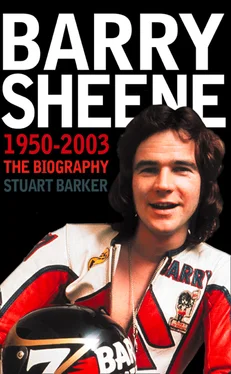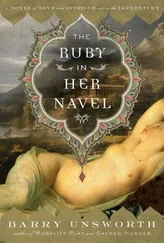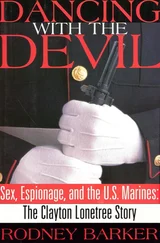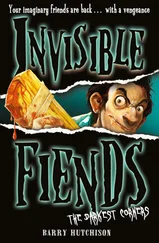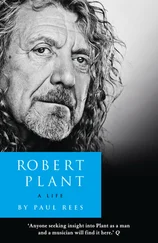During his recovery period in 1975, Sheene found that he had a lot of spare time on his hands, and the most natural way he could think of to fill it was to chase girls. The fact that at the time he was sharing the London home of his great friend and aristocratic socialite Piers Weld Forrester, who was probably most famous for his association with Princess Anne before her marriage to Captain Mark Phillips, made for rich pickings on the female front. Forrester and Sheene received countless invitations to high-society parties and Sheene confessed that the women he met were major contributors to his recuperation process. ‘My favourite part of the rehabilitation process was trying to bed as many women as possible,’ he said. Chas Mortimer, himself the product of a public-school education, admired the way Sheene was able to break down social barriers and become accepted by the aristocracy. ‘There were quite a few people from the aristocracy in those days who used to be associated with racing. Barry would always be up at the Piers Forrester parties in London and he was a great one for hob-nobbing with the landed gentry, and you know what the landed gentry are like when they meet a cockney who appeals to them. All of a sudden, like Michael Caine in the film world, you become socially acceptable, whereas in other spheres of life cockney-ism might not be acceptable for them. Motorcycling tended to be a working-man’s sport and car racing tended to be the landed gentry’s kind of sport. Barry was able to transcend the social barriers, which are very strong in the UK, stronger than anywhere else in the world probably.’
Forrester’s death during a minor bike race at Brands Hatch in 1977 devastated Barry; it was yet another reminder of how dangerous motorcycle racing was in the seventies. According to Mortimer, the dangers of the sport even affected how close some riders got to one another. ‘Barry and I have always got on quite well together, but we were never the best of buddies. We were from the same generation and it was difficult in those days because a lot of people were getting killed and you didn’t want to make too much of a mate of someone in case they got wiped out.’
During the same recovery period, Barry also treated himself to the ultimate status symbol: a Rolls Royce Silver Shadow complete with personalized registration plate, 4 BSR. Racing rival Phil Read already had one, which might have been reason enough for Sheene to follow suit, but he always claimed he was swayed by Rolls Royce’s reputation for reliability than by the status-symbol trip. The only probable reason Barry didn’t buy a Roller any earlier than he did was because he’d lost his driving licence for 18 months for drink driving. By his own admission he’d had ‘a few rounds of drinks’ in King’s Lynn, Norfolk, with a friend before being involved in an accident while driving home. Barry claimed he got slivers of glass in his eyes from the collision and went straight home to rinse them out, only to find a police car awaiting him. Barry later appeared at King’s Lynn Crown Court protesting that he had fully intended to call the police to report the incident as soon as he had washed the glass out of his eyes, but his licence was suspended for a year with another six months added on as part of the points totting-up system (he already had various other minor offences on his licence). Sheene was also required to take another driving test in order to regain his licence, which he eventually did, but for one and a half years he needed to be driven everywhere he went, except on the Continent, where he drove himself.
The King’s Lynn incident wasn’t the only occasion when Barry found himself with a spot of car trouble. He very nearly drowned after some hire-car antics in Italy in 1974 went overboard – quite literally. Sheene was fooling around in the Fiat with fellow racers Kenny Roberts and Gene Romero, experimenting with a somewhat unorthodox driving method: Roberts took the wheel, Romero operated the foot pedals and Sheene applied liberal and erratic doses of handbrake at his leisure. The result was predictable, even if the location was a little unusual: the trio ended up in a canal, the Fiat turned upside down and sinking fast. Romero got out relatively easily but Barry was temporarily snagged up in the very handbrake he had so recently been abusing. He, too, eventually got out, but he still had to rescue Roberts who was calling for help, trapped in the quickly submerging vehicle.
On another occasion, again in Imola, Sheene parked his hire car in the town square unaware that the market was due to take place the following morning. When he returned to the car he found stalls all around it, one in particular utilizing the bonnet. Oblivious to the jeers of the traders who were convinced that Sheene was going nowhere until the market was over, Barry simply climbed into the car, floored the accelerator and smashed through the stalls. Dumbfounded pedestrians could well have been forgiven for thinking a James Bond movie was being filmed in their home town. After all, the two did have a certain number in common.
Sheene’s laddish behaviour might have continued unchecked, but his womanizing days came to an abrupt end in late 1975 when he met Stephanie McLean, a 22-year-old glamour model, former Playboy bunny girl and star of the classic Old Spice surfing advert. Stephanie was at the time married to top glamour photographer Clive McLean, with whom she had a five-year-old son, Roman. Such was Sheene’s standing as a national celebrity in early 1976 that a picture of him stepping out on town with Stephanie made the front page of the Sun – a somewhat dubious honour reserved for ‘class A’ celebrities and a sure sign that Barry was now a household name, in Britain at least.
Barry first met Stephanie at Tramp while he was still on crutches. She had seen the Thames Television documentary surrounding his Daytona crash and asked to borrow his leathers for an October modelling assignment which Sheene himself attended. He was instantly smitten with Stephanie and appeared to give up his womanizing almost overnight, even if such a drastic change of lifestyle threatened his image. ‘I couldn’t give a monkeys about the bachelor playboy image being ruined,’ he said. ‘The image was only there because that’s what I was like.’ Sheene later admitted that settling down to a one-woman relationship wasn’t as difficult as he thought, although his very words seemed tinted with an air of nostalgia for good times past. ‘With a massive list of conquests behind me, I knew I had completed all the running around I had ever wanted,’ he said. ‘Since settling down to a steady relationship with Steph, I have never once yearned for those wild times: the days of the paddock groupies; the passionate notes waiting for me when I returned to hotels after a race; the women who simply wanted to experience sex with a celebrity. All that is behind me now.’
Meeting Steph might have marked the end of Sheene’s direct involvement with other women, but it certainly didn’t stop other girls swooning over him, or even rowing over him. At Cadwell Park in 1976, two girls had a stand-up fight outside Barry’s caravan as they fought to get near him for his autograph, and on another occasion a girl approached Barry wielding a pair of scissors in a desperate attempt to snatch a lock of his hair. It was the kind of behaviour previously reserved for rock stars, and it prompted the media to refer to Sheene as a rock star on a bike.
Barry certainly lived up to the tag in 1979 while staying in a five-star hotel before that year’s French Grand Prix. Trying to get a good night’s sleep before the race, Barry became increasingly annoyed with the band playing at full volume downstairs. When a phone call to the manager had no effect, in protest Barry emptied the contents of his mini-bar over the balcony near where the band was playing, but again to no avail. When another call to the manager failed to subdue the noise, Sheene performed the classic rock star attention-grabber: the 26-inch colour television was lobbed out of the window and it shattered into a million pieces, loudly enough to be heard over and above the offending band. They stopped playing straight away and Barry got his peaceful night’s sleep. In fact, he got more than that. Upon returning to the hotel after the race, he found that a new television had been placed in the room along with an ice bucket and two bottles of champagne by way of apology on the management’s behalf for permitting so much noise at the dance.
Читать дальше
